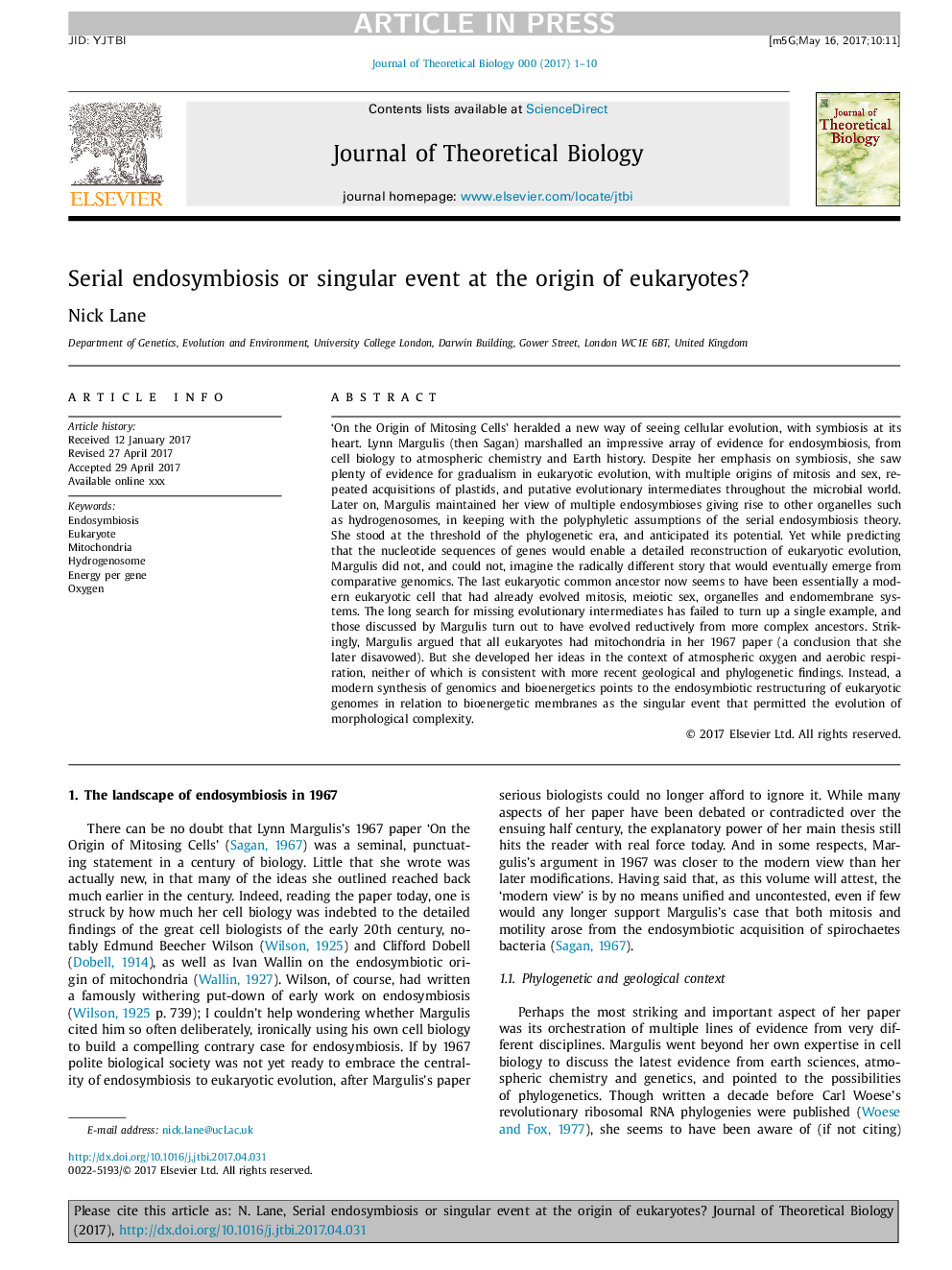| Article ID | Journal | Published Year | Pages | File Type |
|---|---|---|---|---|
| 5760238 | Journal of Theoretical Biology | 2017 | 10 Pages |
Abstract
'On the Origin of Mitosing Cells' heralded a new way of seeing cellular evolution, with symbiosis at its heart. Lynn Margulis (then Sagan) marshalled an impressive array of evidence for endosymbiosis, from cell biology to atmospheric chemistry and Earth history. Despite her emphasis on symbiosis, she saw plenty of evidence for gradualism in eukaryotic evolution, with multiple origins of mitosis and sex, repeated acquisitions of plastids, and putative evolutionary intermediates throughout the microbial world. Later on, Margulis maintained her view of multiple endosymbioses giving rise to other organelles such as hydrogenosomes, in keeping with the polyphyletic assumptions of the serial endosymbiosis theory. She stood at the threshold of the phylogenetic era, and anticipated its potential. Yet while predicting that the nucleotide sequences of genes would enable a detailed reconstruction of eukaryotic evolution, Margulis did not, and could not, imagine the radically different story that would eventually emerge from comparative genomics. The last eukaryotic common ancestor now seems to have been essentially a modern eukaryotic cell that had already evolved mitosis, meiotic sex, organelles and endomembrane systems. The long search for missing evolutionary intermediates has failed to turn up a single example, and those discussed by Margulis turn out to have evolved reductively from more complex ancestors. Strikingly, Margulis argued that all eukaryotes had mitochondria in her 1967 paper (a conclusion that she later disavowed). But she developed her ideas in the context of atmospheric oxygen and aerobic respiration, neither of which is consistent with more recent geological and phylogenetic findings. Instead, a modern synthesis of genomics and bioenergetics points to the endosymbiotic restructuring of eukaryotic genomes in relation to bioenergetic membranes as the singular event that permitted the evolution of morphological complexity.
Related Topics
Life Sciences
Agricultural and Biological Sciences
Agricultural and Biological Sciences (General)
Authors
Nick Lane,
